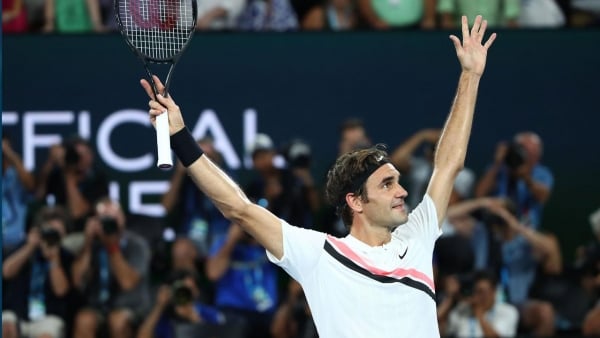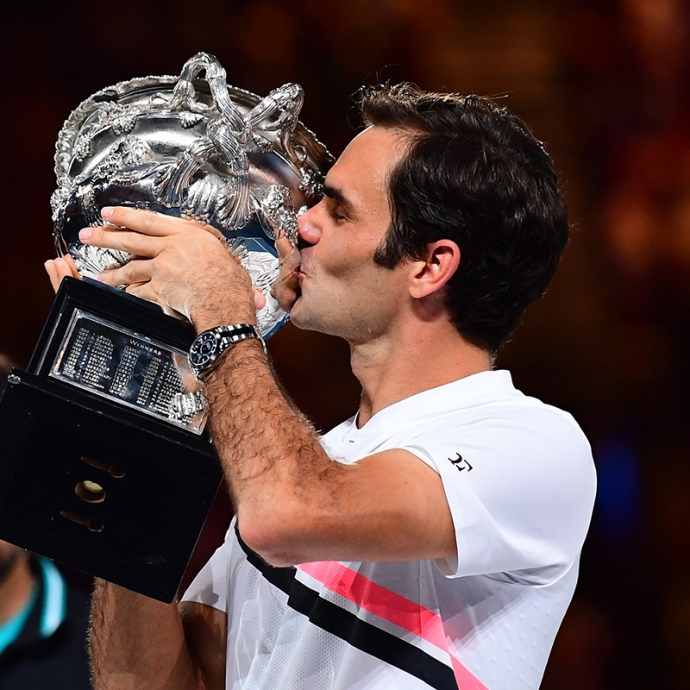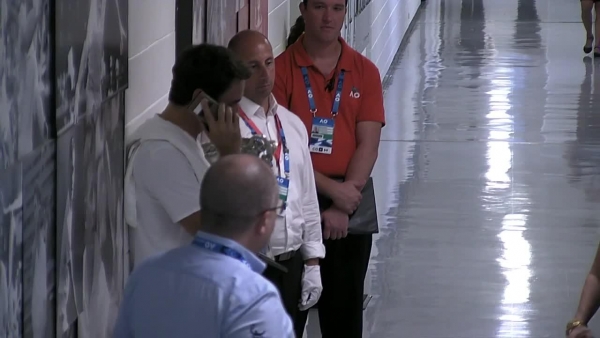Twenty Grand Slam titles has an especially pretty ring to it.
Nineteen? Impressive. Wonderful. Superlative, even. Roger Federer had a men’s-record 19 major trophies after winning Wimbledon last year, a tally that put him well clear of the second-placed Rafael Nadal and cemented his widely-accepted status as the Greatest Of All Time.
But 20? That’s huge. Almost mystical. Very few players have traversed such territory. The way the crowd reacted, during the trophy presentation after Federer defeated Marin Cilic in the Australian Open 2018 men’s singles final and the stat was announced, spoke to the magnitude of the feat.
Federer reacted too, breaking down in tears at the conclusion of his speech. Hearing “20 Grand Slam titles” must have been overwhelming.
But, in all honesty, it doesn’t really matter how many major singles trophies Federer has collected. What matters is that he’s still collecting them.
In August this year, the Swiss will celebrate his 37th birthday. And he has won three of the past five Grand Slam tournaments staged.
Only Australia’s Ken Rosewall can say, like Federer, that he won multiple Grand Slam titles beyond the age of 35. Like Federer, he won three, but they were spaced out over three years, not condensed into a glittering 12-month stretch. And two of them, at the 1971 and 1972 Australian Opens, came at editions with downsized 48-player draws filled largely with local players.
Federer’s level of success is unprecedented.
Prior to 2017, it would have been considered almost impossible. Before he triumphed at the Australian Open las year, Federer endured a four-and-a-half year stretch without a major title. His last success had come at Wimbledon 2012; a few months later, in October, was the last time he was ranked No.1.
In the ensuing period, through the end of 2016, Federer’s claim to the GOAT throne was under siege. He was increasingly overshadowed by other players – primarily by Novak Djokovic, who stopped him in three major finals across 2014 and 2015, and also in the Australian Open 2016 semifinals.
With Nadal continuing to rack up Roland Garros titles, both he and Djokovic were catching Federer on the list of Grand Slam titles won while simultaneously improving their head-to-head records against the Swiss. In that four-and-a-half year period following Wimbledon 2012, he went a collective 8-17 against the Spaniard and the Serb.
Which is what made his 2017 renaissance all the more extraordinary. You’re not supposed to get better at age 36. Athletes at that age are supposed to be tailing off, physically and mentally, into retirement.
But Federer’s victory in last year’s final, against nemesis Nadal, from 3-1 down in the fifth set, quite literally changed everything.
As Jon Wertheim noted at the time for Sports Illustrated: “The fifth set of the Federer/Nadal 2017 Australian Open—a 42-minute interregnum—will have consequences on tennis history that will echo for decades.”
Added Federer’s former coach Paul Annacone, speaking to Wertheim on the Beyond The Baseline podcast: “When Roger all of a sudden at 3-1 (down) in the fifth is able to play 20 minutes of spectacular tennis and basically hit Rafa off the court, that is an awakening. And I think we’ve seen a little bit of the trickle-down effect.”
That trickle-down effect has persisted ever since. Suddenly, Federer was playing freely against his rival, winning their subsequent encounters in Indian Wells, Miami and Shanghai – all in straight sets. The head-to-head, which Federer once woefully trailed 10-23, has become a far-more respectable 15-23.
And with Djokovic faltering and without a major trophy for almost two years, Federer has pushed well ahead of both him and Nadal on that “major titles won” list.
With his latest Grand Slam triumph at Australian Open 2018, Federer has well and truly cemented his GOAT credentials.
So what’s left to achieve when you’ve already scaled the summit?
Aim higher. As Leigh Walsh observed in the AO Live Blog: “Maybe I’m reading too much in this but who doesn’t love a sign? As Federer meandered down the walk of champions as he exited Rod Laver Arena, he gave a little tap to the pillar which Steffi Graf hangs from. Maybe a little suggestion of ... “I’m coming for your 22 (Grand Slam titles)?”
Why not? After all, 22 sounds even prettier than 20.



